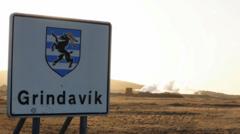In anticipation of the eruption, evacuation orders were issued for both Grindavík and the nearby Blue Lagoon spa, a popular tourist spot in the region. As a result, access roads to the town have been closed; however, flight operations remain unaffected for the time being. By 11:00 local time, the original fissure had further widened, with another crack forming in the area.
Authorities have expressed urgency, calling for any remaining residents of Grindavík to evacuate immediately. Reports indicate that while many have complied, some individuals had initially hesitated. The police chief, Úlfar Lúðvíksson, noted that only around 40 houses were occupied, owing to earlier evacuations that had displaced most of the town's 4,000 residents beginning in November 2023.
The current eruption is notable as the longest magma tunnel, measuring about 11 kilometers, has been identified under the newly active crater series, a significant development since the previous volcanic activities earlier this year. Additionally, the IMO has reported that the gas released from the eruption is expected to drift northeast towards the capital area, raising further public health considerations.
Since 2021, the Reykjanes Peninsula has experienced multiple volcanic eruptions, with the last extensive eruption period recorded nearly 800 years ago, which lasted several decades. Iceland, positioned over the Mid-Atlantic Ridge, is home to 33 active volcano systems, making it a hotspot for geological research and monitoring in the face of natural events.
Authorities have expressed urgency, calling for any remaining residents of Grindavík to evacuate immediately. Reports indicate that while many have complied, some individuals had initially hesitated. The police chief, Úlfar Lúðvíksson, noted that only around 40 houses were occupied, owing to earlier evacuations that had displaced most of the town's 4,000 residents beginning in November 2023.
The current eruption is notable as the longest magma tunnel, measuring about 11 kilometers, has been identified under the newly active crater series, a significant development since the previous volcanic activities earlier this year. Additionally, the IMO has reported that the gas released from the eruption is expected to drift northeast towards the capital area, raising further public health considerations.
Since 2021, the Reykjanes Peninsula has experienced multiple volcanic eruptions, with the last extensive eruption period recorded nearly 800 years ago, which lasted several decades. Iceland, positioned over the Mid-Atlantic Ridge, is home to 33 active volcano systems, making it a hotspot for geological research and monitoring in the face of natural events.





















